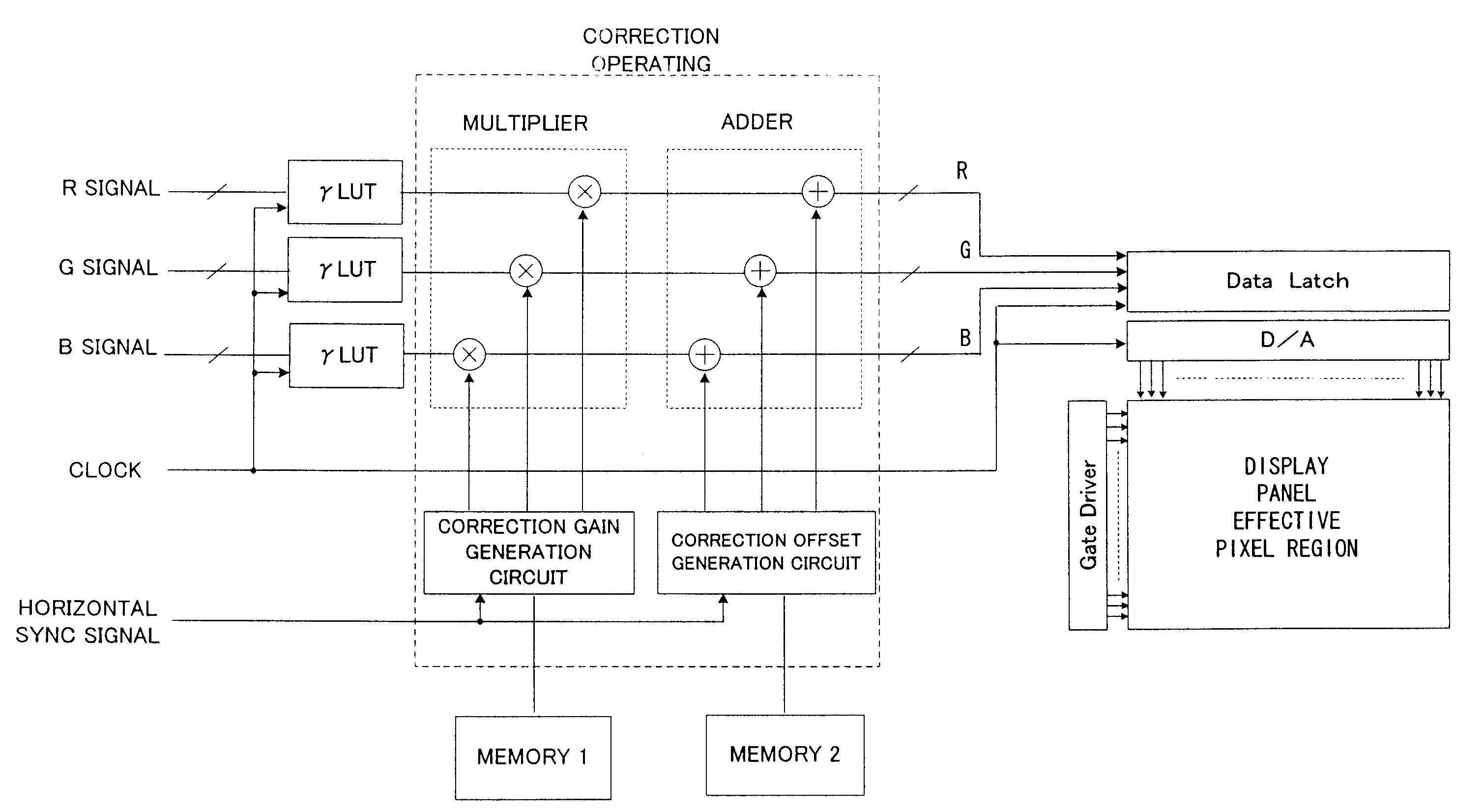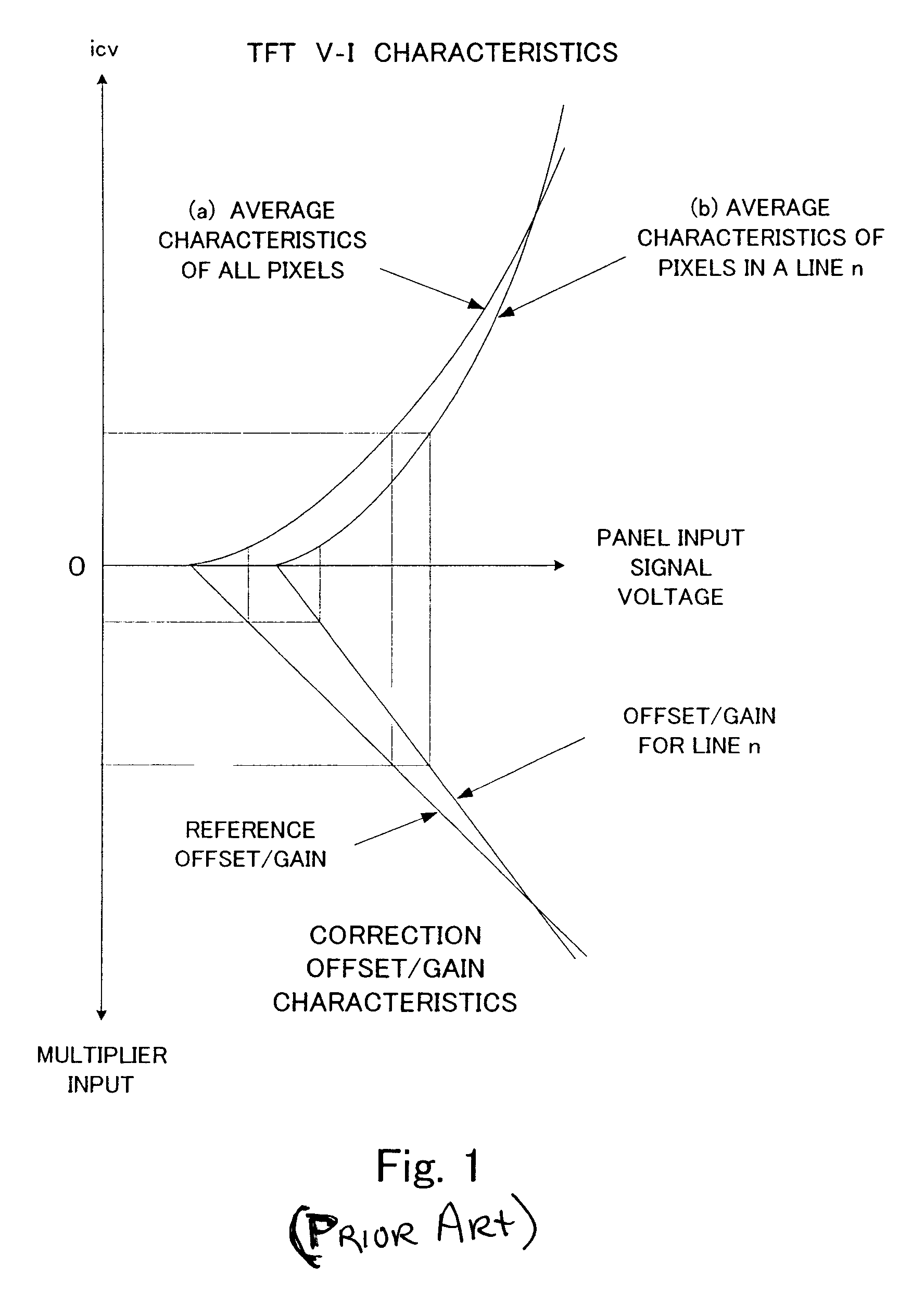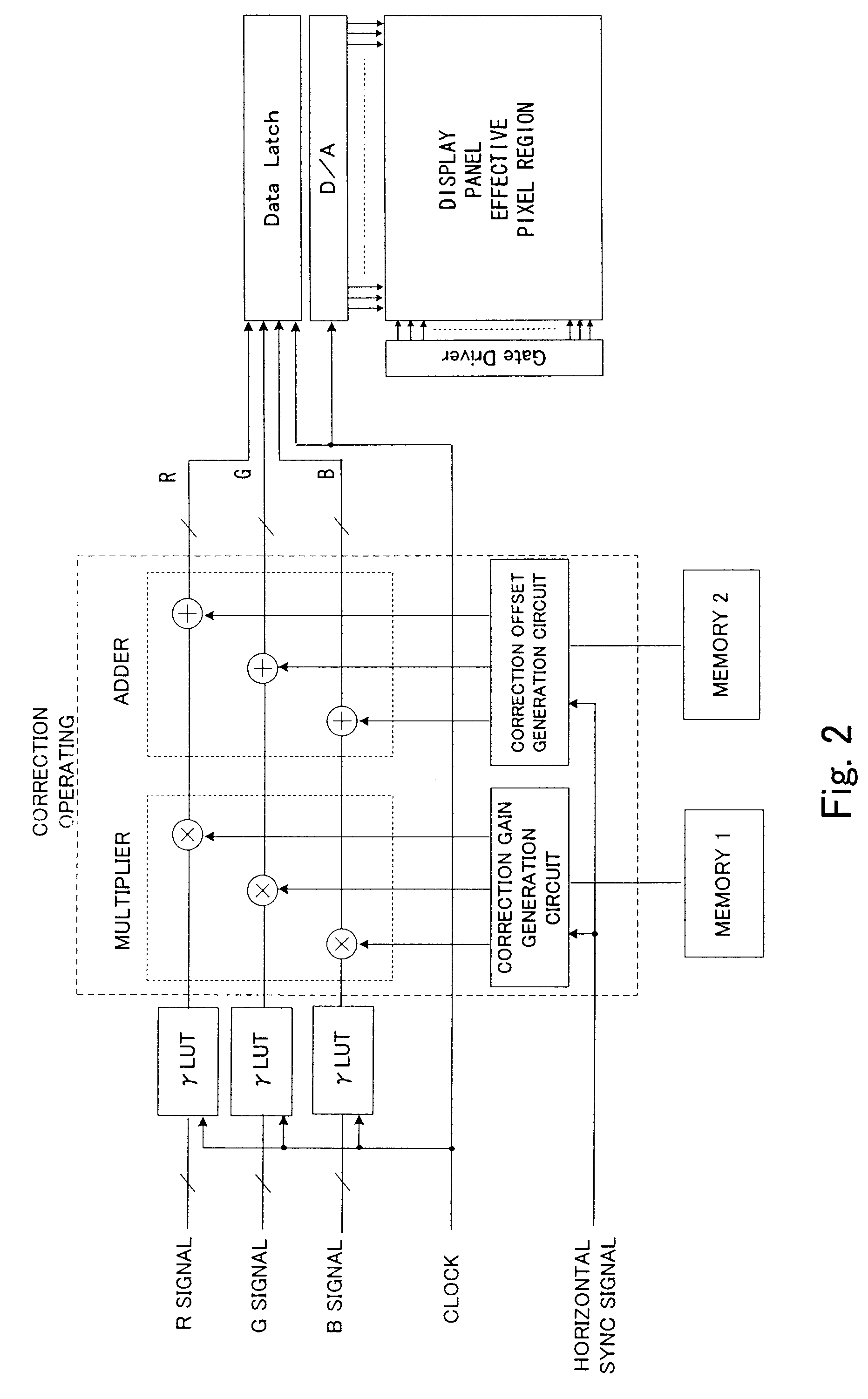Display apparatus
- Summary
- Abstract
- Description
- Claims
- Application Information
AI Technical Summary
Benefits of technology
Problems solved by technology
Method used
Image
Examples
Embodiment Construction
[0049]Hereinafter, embodiments of the present invention will be described with reference to the drawings.
[0050]FIG. 4 shows an example of an organic EL display apparatus according to the present invention, which can produce corrected brightness data, i.e., analog signals, based on input brightness data and can supply the corrected brightness data to pixels constituting a display panel.
[0051]A display panel 10 includes numerous R, G, and B pixels (i.e., pixels generating R, G, and B colors), and can input R, G, and B brightness signals for the display of R, G, and B colors. For example, the display panel 10 includes the same color of pixels arrayed in the vertical direction. One of R, G, and B data can be supplied to each data line. Each pixel can emit light in response to one of R, G, and B data supplied from a corresponding data line. In the example, R, G, and B signals are 8-bit brightness data.
[0052]The R, G, and B signals can be independently supplied to corresponding R, G, and ...
PUM
 Login to View More
Login to View More Abstract
Description
Claims
Application Information
 Login to View More
Login to View More - R&D
- Intellectual Property
- Life Sciences
- Materials
- Tech Scout
- Unparalleled Data Quality
- Higher Quality Content
- 60% Fewer Hallucinations
Browse by: Latest US Patents, China's latest patents, Technical Efficacy Thesaurus, Application Domain, Technology Topic, Popular Technical Reports.
© 2025 PatSnap. All rights reserved.Legal|Privacy policy|Modern Slavery Act Transparency Statement|Sitemap|About US| Contact US: help@patsnap.com



